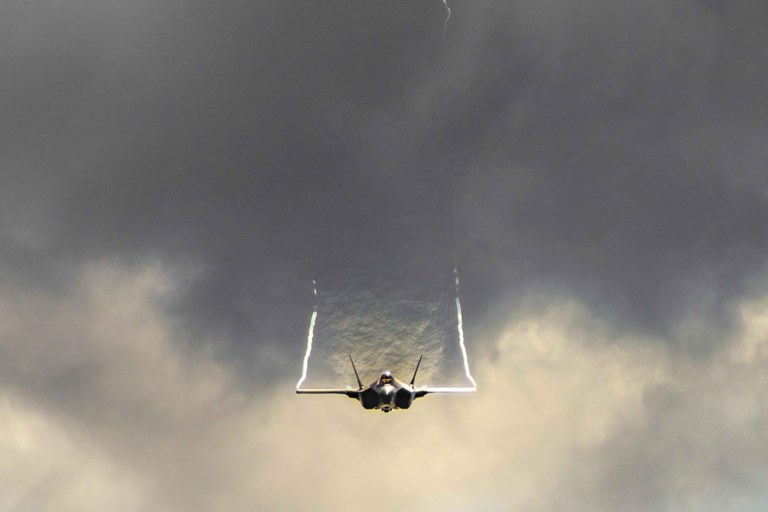The F-35 fighter jet, which Belgium has ordered to replace its existing F-16s, has 873 “unresolved deficiencies,” according to a report delivered this week by the Pentagon in Washington to the US Congress.
Some of the faults – 13 in all – are considered critical. The tally is less serious now that the last time a report was compiled on the plane’s problems: then there were 15 critical faults out of a total of 917. But along the way, while some faults were corrected, new ones have developed.
According to De Standaard, the defence department in Brussels is not overly concerned. “Our F-16s at this moment have more than 1,000 deficiencies, said Colonel Harry Van Pee, who was in charge of the replacement programme. “For a complex new plane like the F-35, 800 is not too bad. It’s especially good that new things are continually being tested and discovered, because then you can tackle the problem.”
The majority of the hundreds of faults are concerned with software systems and cybersecurity – but not all. In the case of the model F-35A in particular, which is the model that Belgium will be receiving, the Pentagon found fault with the 25mm cannon, which does not work correctly. Or, as the Pentagon put it, “The accuracy of the gun, as installed in the F-35A, is unacceptable”. In addition, under intensive testing, the gun developed cracks.
To make matters worse, even when problems are remedied, the lack of testing facilities holds up approval. Then, when testing is carried out, it often turns out that solving one problem – particularly in the case of inter-dependent software systems – had caused a problem elsewhere.
But at least the endless round of testing and re-testing is not costing the defence department money, Col. Van Pee said – at least for now. “In the contract it says that we do not have to pay development costs either new or historic until 2030, thanks to a major concession by the Americans. If after 2030 we do have to pay, the new contract sets a limit of no more than one percent. Then we’re looking at similar sums to what we now pay for the F-16s, or about ten million euros.”
Alan Hope
The Brussels Times

